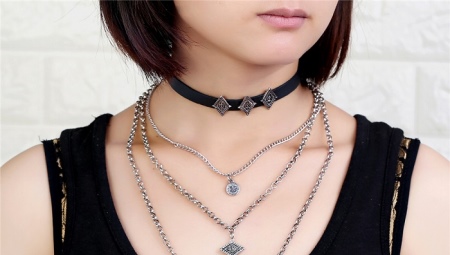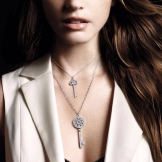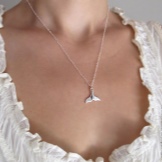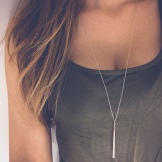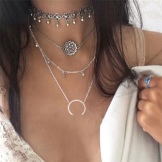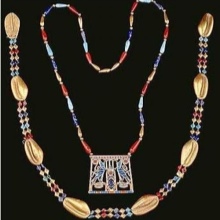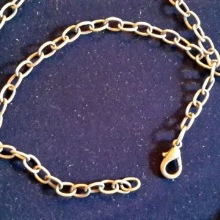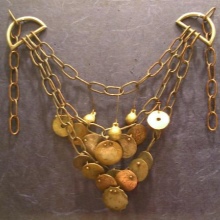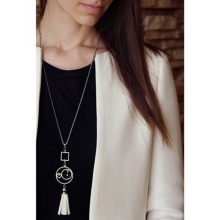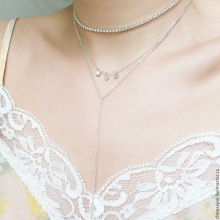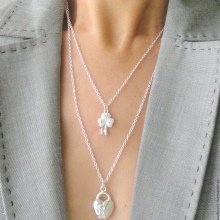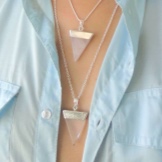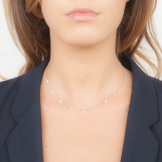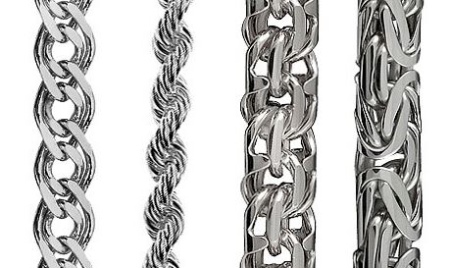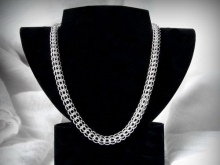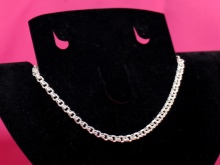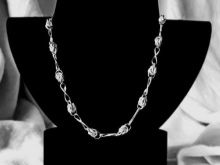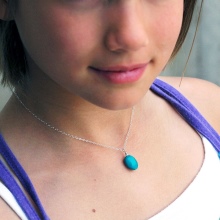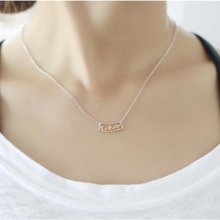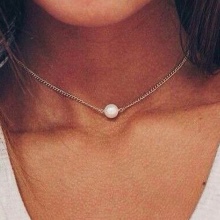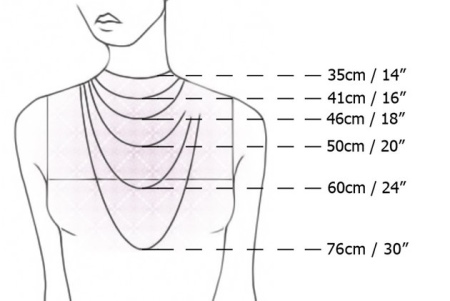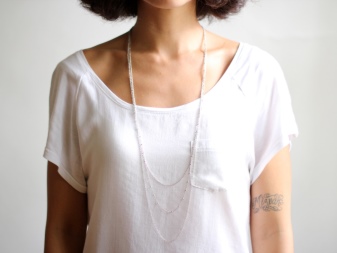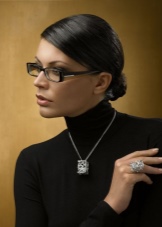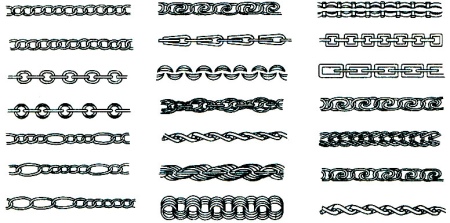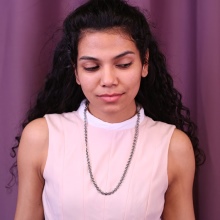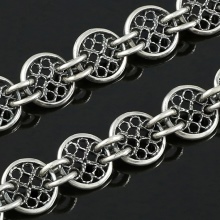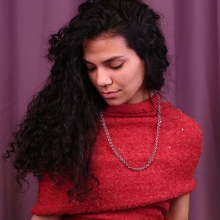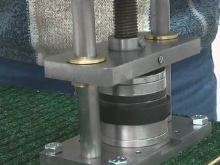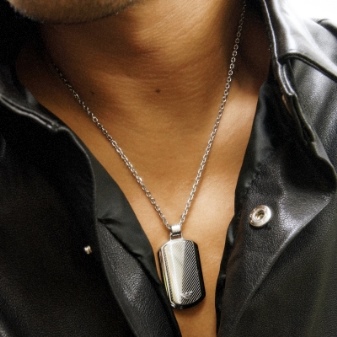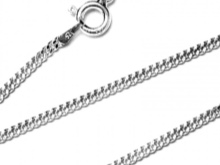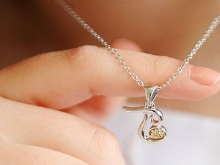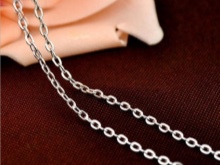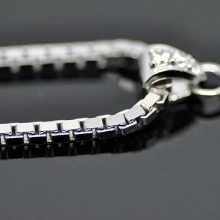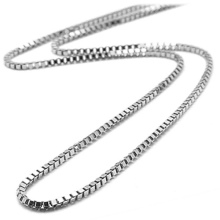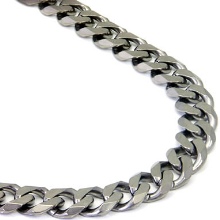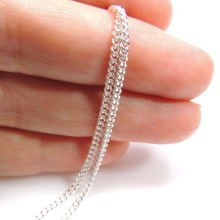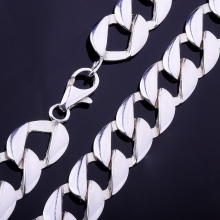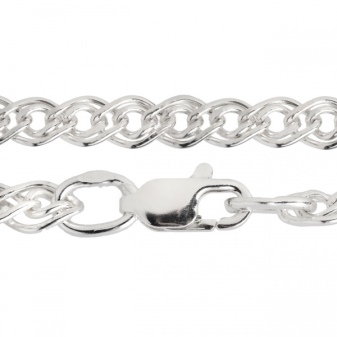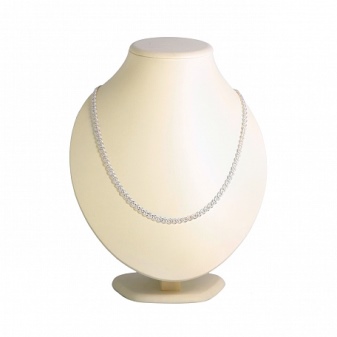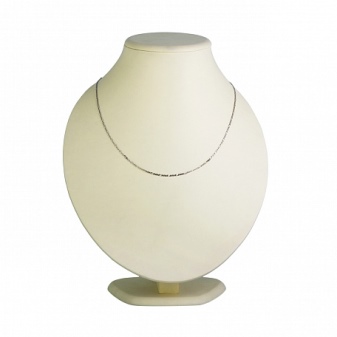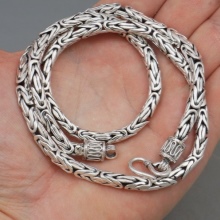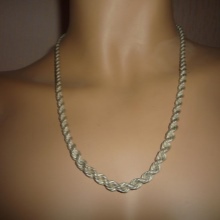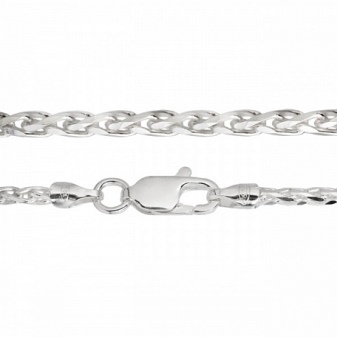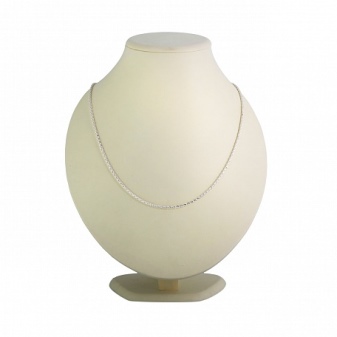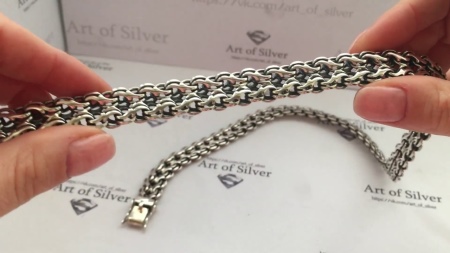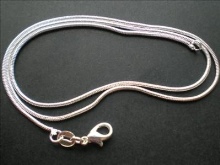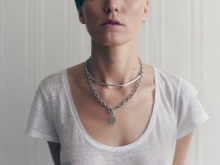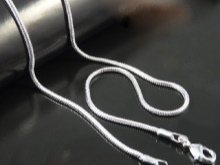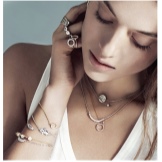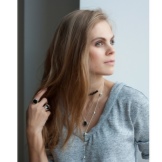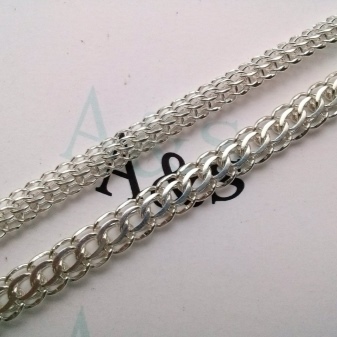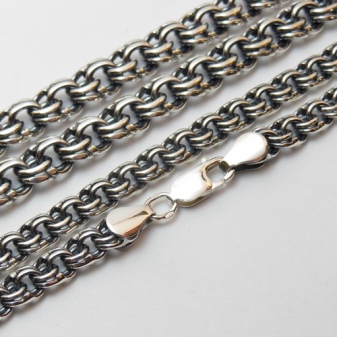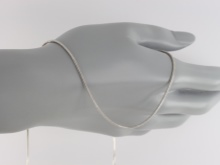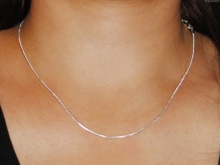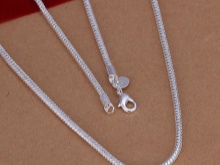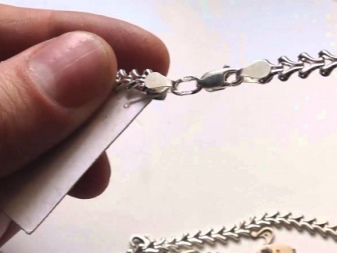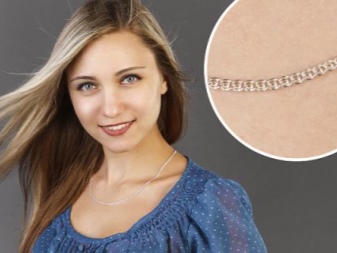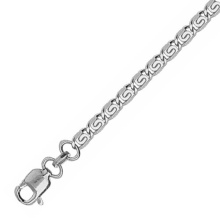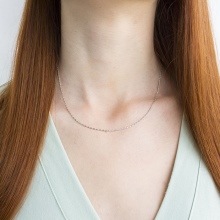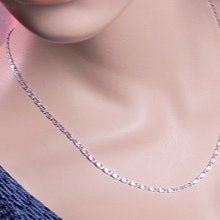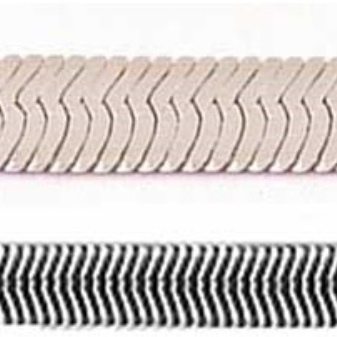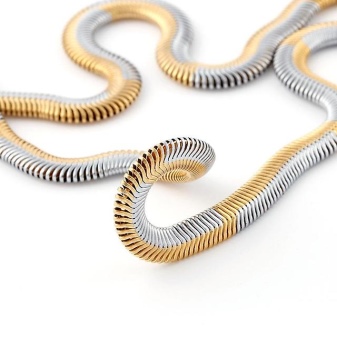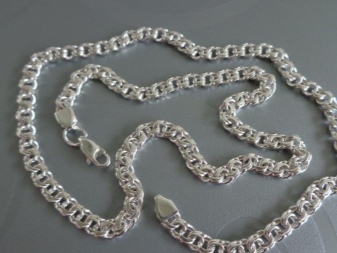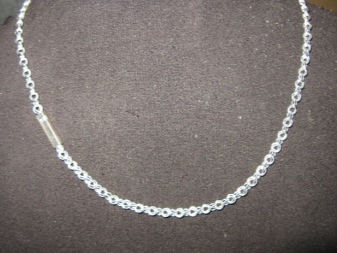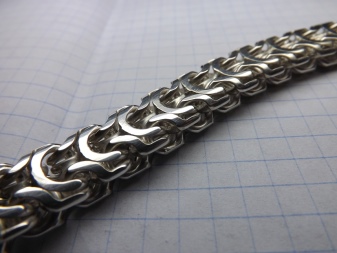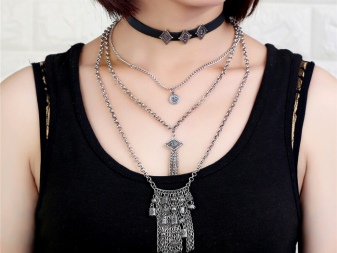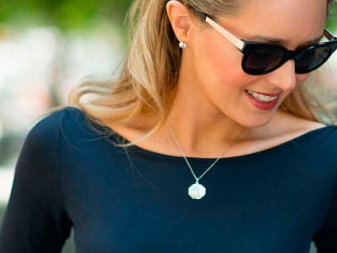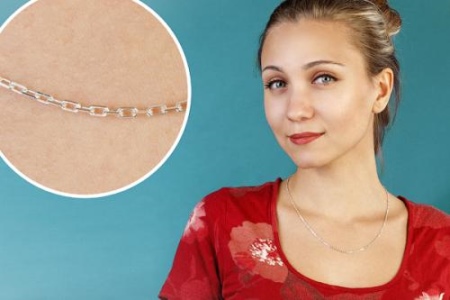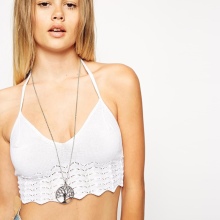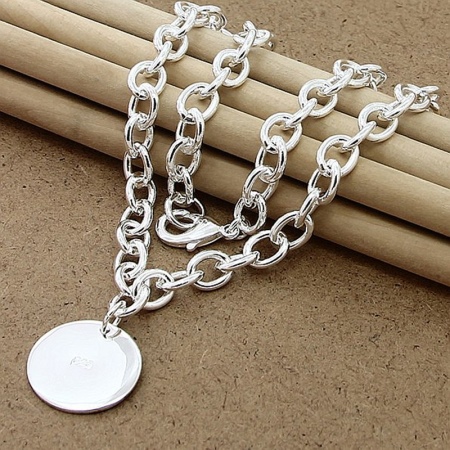The chain is one of the most ancient accessories, known in ancient times.. Previously, it was an indicator of high status and financial well-being. Today, the chain is a versatile decoration that can be worn separately, and can be decorated with a beautiful pendant, cross or figure. The range of silver products is huge, but the first thing they differ from each other is the different types of weaving.
Chain Differences
In antiquity, the chain was a purely masculine decoration, especially fashionable during the reign of the pharaohs.
However, modern fashion is changeable, and many girls and women wear such jewelry daily.
Models for women are distinguished by sophistication and simplicity at the same time. An interesting chain of silver fits perfectly with a cross and various amulets.
The chains are thick in their thickness, of medium thickness and thin.
As for the thick products, very few women choose such an option. This is more of a male model, even despite the rule that full ladies should choose their own large accessories, this does not apply to chains.
And full, and slender girls well fit chain of medium thickness or thin.
Teenagers, very young girls and girls the ideal solution would be to purchase an extremely thin chain.
Different chains and length. There are very short models that do not descend below the clavicle, but there are products that reach the chest.
The round chain of medium length and long thin models that can be decorated with an interesting pendant look very beautiful on the girls.
A flat chain is suitable for an elegant business style that can fill the entire image with discreet elegance.
Link technology
Links - the main component of each chain. They come in all shapes - square, round, oval, spherical. Jewelry makers interweave them in accordance with the old and new technologies. More than 70 types of weaving are already known today.
The very first and oldest way to connect links - manual. In the absence of the necessary equipment before the chain was made in this way. Nowadays, some products continue to be made in this way, because the decoration is the most durable. True, the work of the master is very hard, you need all the attention and concentration. The end result is very much appreciated; many people prefer chains of exclusively hand weaving.
Machine way of interlacing links is relatively young.. Everything is simple, the method is fully automated. Silver is melted, then stretched, and the wire is obtained, from which the links are subsequently made. The next stage is the machine connection of links in a chain. This type of work is used for chains of classic style, strong and durable.
In addition to the manual and machine method, there is also a stamped. This is the fastest and relatively inexpensive way to make even large products seem lighter in weight. Pre-prepared links do not hold together, but thread one into the other. Such technology is not appreciated very highly, products are constantly being torn, twisted and deformed. Chains made in a stamped way should not be worn at night, pulled and compressed.
Types of weaving
In addition to various technologies of connecting links, there are also many types of chain weaving. Their names are so unusual and numerous that sometimes it is easy to get confused. However, there are three main categories - classical, modern and fancy weaving..
Classic
Anchor weaving - one of the most famous and simple types of link links, chosen by jewelers in antiquity. The links located perpendicularly are very tightly connected and resemble an anchor chain, hence the name of the technology. The anchor chain is very durable and strong, it is able to withstand heavy loads. Such chains are ideal for subsequent decoration with pendants and pendants.
There are also subspecies of anchor weaving, among them the famous "Venetian". Thin rectangular or square elements create a unique ensemble and are very suitable for young girls. Cord weaving involves a set of several links at once and connecting them through a certain distance. Such a chain is also called a “rope” because it really resembles a twisted ribbon.
Carapace - the second subtype of the classic connection chains. It got its name because the product subsequently looks like a shell or chainmail. Models of this type also have good strength, and have a huge audience of fans. In such chains, the links are very close to each other, lie in the same plane. Thanks to this technique, the chain is smooth and solid.
Crank weaving also has subspecies, the most famous of them are Nonna and Figaro. There is a beautiful diamond cut in the Nonna weaving on both sides of the chain, which shimmers in the sun.
“Figaro” is a non-constant chain, the links are located, at first glance, chaotically, but upon closer examination it becomes clear how perfectly they alternate.
Modern
Among the modern types of weaving in the first place stands out "Byzantine". Call it even "ear" or "cone." This is one of the subspecies of weaving "Bismarck", the links here seem to "look" in one direction.
Such a chain resembles a wheat spikelet, which explains its name. To confuse such decoration, you need to try very hard, so the “Spike” is very popular among the female half of the population.
“Double Stream” is a very interesting subspecies, the difference of which consists in a beautiful roundness and ornate clutch of links. By the way of execution it is similar to Bismarck, some people even often confuse these two types. There is a "trickle" of different thickness, so it is ideal for young girls, women aged and even children.
Weaving "Flagellum" - one of the most practical. This is a very durable, resistant piece that looks like a twisted braid. Thin and long flagella will look great on women of all ages.
Also interesting is the weaving “Peas”, where round links are connected, resembling small peas. Such chains are very light and airy.
Fantasy
There are a lot of fantasy types of weaving, because demanding fashion-mongers want something new every time.
"Cardinal" or "Python" is a very light, romantic item. However, its strength is very high, such a chain just will not break. The links connected in the openwork style look very gentle and elegant.
"Snake" - a very thin chain, it is fragile and needs careful wearing. "Snake" is also called the textile type of chain, because it looks like a small thin string. For products of this type you should not pick up additional decor, all their advantage is fragility and freshness.
Weaving "Love" (love) implies a connection of links in the form of hearts - this is the perfect solution for young girls.
"Snail" - twisted chain, a bit like a seashell.
There is a beautiful "Cleopatra" - smooth, resembling a small snake necklace. It is very nice to the body and looks like ancient Egyptian jewelry.
Slavic types of chains are characterized by unusual and original weaving, often double or triple. These openwork products are both thin and massive. For the most part, jewelers use the elements of weaving Bismarck, the most popular technique all over the world, for such chains.
Tips for choosing
Silver chain is a very stylish accessory that can finish the image and emphasize the individuality of its owner. Choosing a chain, you need to focus on your own build. Young slender girls can be advised to purchase thin or medium-sized products that will attract attention to the freshness and flush of the face. Fat girls, as well as older women may well pick up the chain with fancy weaving and various pendants.
As for the shape of the face, there are also some nuances. Large products will look great with a triangular face. If you have a square type - be guided by the length, you will need a thin long chain with an oblong pendant. This rule is true for women with pear-shaped face. The oval shape perfectly harmonizes with short and medium length decorations.
Clothes under which you will wear a chain is another important factor. Very short chains can be worn with any clothes, as long as she does not have a high collar. Medium-length jewelery is also suitable for everything, they are able to perfectly emphasize the chest, but should not be hidden in the neckline. Long chains look amazing in closed attire, especially if it is a sophisticated evening dress.
From the countries producing silver jewelery, Italy and Germany occupy the first place. In ancient times, Italian jewelers were famous for their craftsmanship. Today, their best salons are ready to offer elegant and unsurpassed chains of absolutely all types of weaving. German silver chains, perhaps less sophisticated, however, in their strength and beauty can not be doubted.
